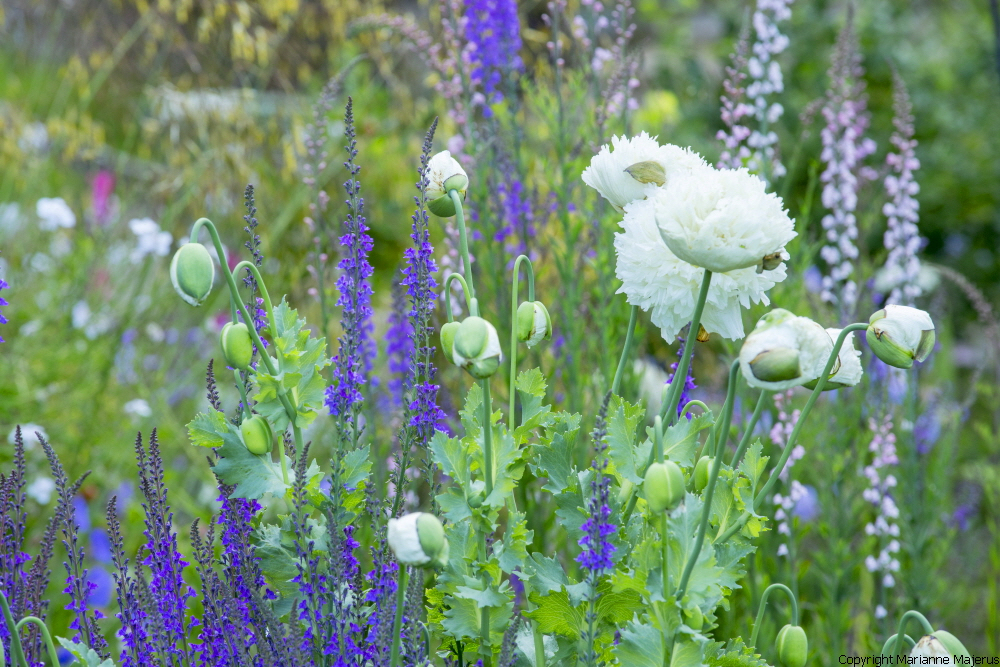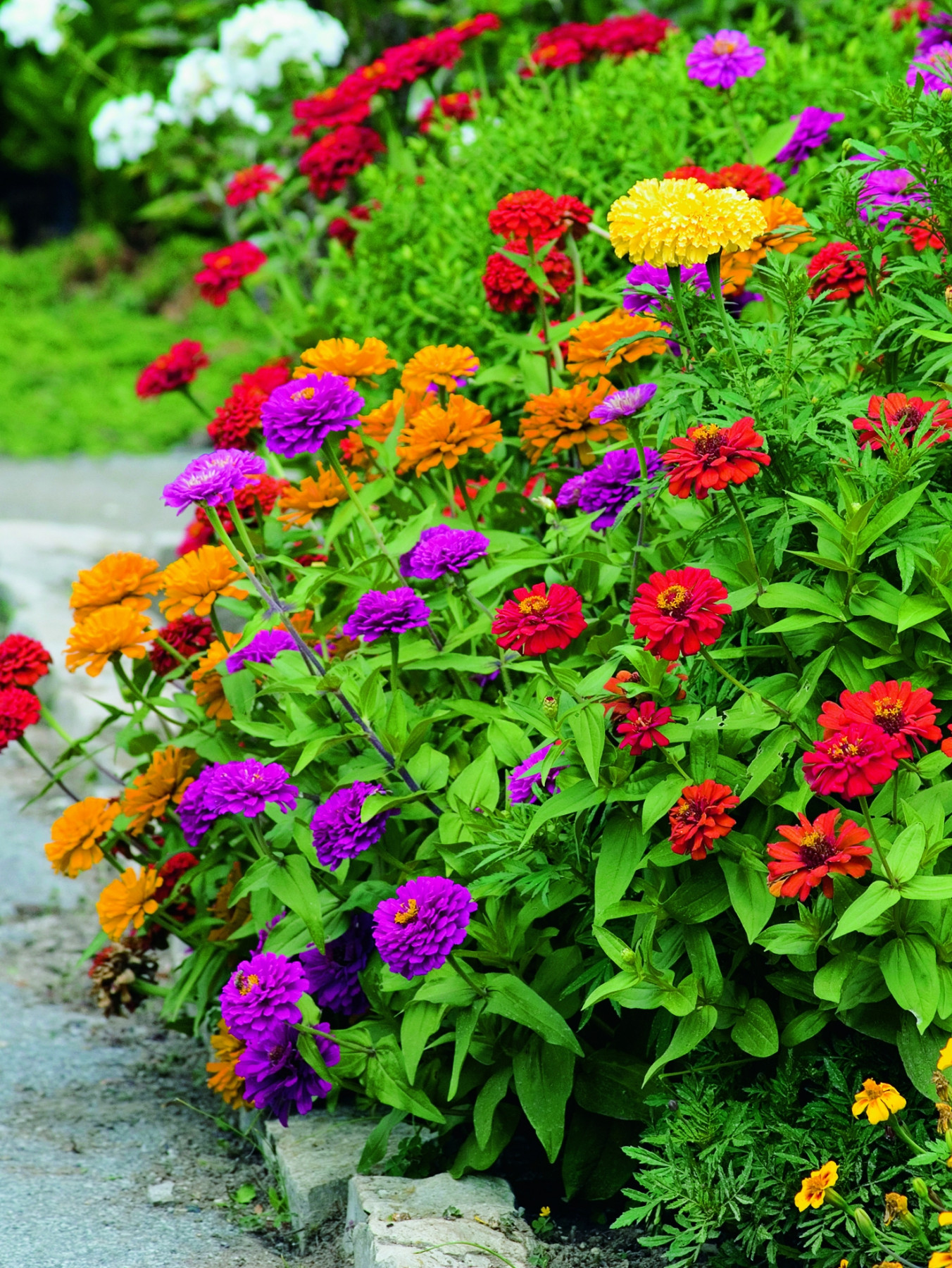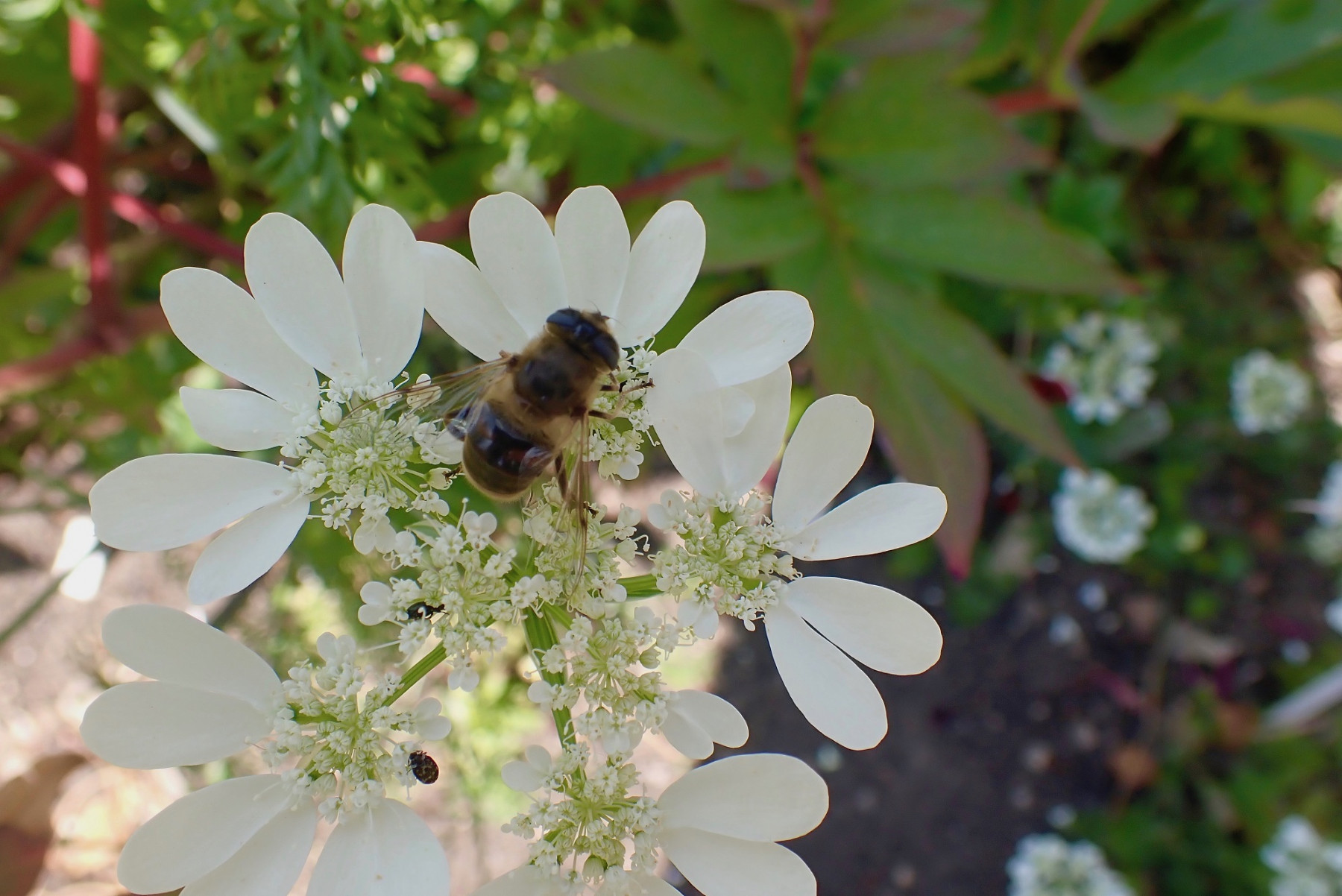
Pauline Quirke is a wonderful actress, and perhaps you saw her moving performance in Broadchurch playing Susan Wright, accompanied by her own Labrador Bailey. She’s more famous for Birds of a Feather and there’s a wonderful line about her missing husband, delivered with perfect comic timing, where she says that ‘Paul Daniels couldn’t put the magic back into my marriage’. It still makes me smile years later, because I’ve been there, done that and got the tee shirt – plus the relevant piece of paper.
I think of her line every time I sow seeds, because this is such a magical experience. You take this tiny time capsule and sow it and, lo and behold, it germinates – especially if you have a Hartley greenhouse to play with. My favourite seeds ( and I’m betraying my Yorkshire genes here ) are the ones that I save myself. They cost a little a bit of effort, but they save an enormous amount of money. Gone are the days when you went down to Woolworths with sixpence, as I did as a child. These days buying seeds is an expensive business, so get collecting now. If there’s too much to handle, share it with friends.
There are some golden rules about saving your own seeds. They have to be ripe and that normally means they have turned dark brown ( in most cases ) and begun to rattle, or they’ve begun to break away from the plant. Shake and tap and if they’re ready and ripe, they’ll often fall into your hands. You must collect your seeds on a dry day, so they don’t rot due to damp fungal spores multiplying. Go out at midday or early afternoon, with scissors, labels and old envelopes. Once collected add a label straight away, for when you’re faced with the collection of slender pods, will you remember that it’s an amsonia and not sweet rocket? I didn’t! Clean the seeds as soon as you can and then put them in an old envelope, or paper bag. Place them in an airtight tin, with a clearly written label, to keep them away from hungry mice, or worse. Rodents are very adept at nipping into sheds in autumn and taking the lot.
When to Sow
Any perennial is best sown as soon as possible after harvesting, because viability is reduced with storage. Members of the buttercup family, or Ranunculaceae, need to be sown immediately because their seeds are only viable ( able to grow ) for a very short period. Clematis, hellebores, delphiniums, aquilegias and hepatica, among others, need rapid action. Many a gardener rushes up to the greenhouse there and then. I don’t let everything produce seeds. When it comes to hybrid hellebores, I dead head to keep the vigour into the original and expensive plant. Hybrids have variable seedlings.
Most perennials rely on winter stratification, a posh name for a cold spell, followed by a rise in temperature that signals spring is here. Cold greenhouses are perfect, although you can place your sown seeds into a fridge for six weeks, to emulate winter temperatures. I don’t do this because I like to fill my fridge with fresh food! Most gardeners prefer to let nature to take its course. However some seeds, such as trilliums, peonies and primulas, often need a double cold shock so you can fast forward a year by placing them in a fridge for two chilly sessions.

Sometimes you’ll need two springs for perennials and bulbs, so patience is a definitely a virtue when it comes to seed sowing. I once threw away a seed tray full of autumn-flowering Cyclamen hederifolium after nine months of no show, tipping it onto the garden with feeling, as it hadn’t germinated. Two years later I spotted several flowering cyclamen by the greenhouse door so I learnt my lesson! Be patient. Most perennials will germinate in spring, once temperatures and light levels rise as day length gets longer. Some will need longer and some will never grow at all. It’s not rocket science, it’s magic.
Size matters with seed sowing. Fine dust-like seeds, such as aquilegia and nicotiana, need to be sown on the surface. Larger seeds are covered with a light layer of compost. John Innes seed-sowing compost is best, with one part added coarse grit.
Over watering is the death of most seeds, so water well before sowing and thereafter only when needed. Use tap water for seedlings, because water butt water may not be clean enough. Allow it to stand in the can, so that any chlorine escapes. If you’re not sure whether to water or not, the finger in the compost test works. If it sticks to the finger and feels damp – leave well alone. Always try to sow thinly, because you’ll get sturdier seedlings.
Biennials, plants that take two years to flower, are best sown fresh in midsummer. They include sweet Williams, some foxgloves and sweet rocket ( Hesperis matronalis). They form winter rosettes, so can hopefully be planted out in September as rooted plugs. Prick your seeds out into modular trays – with between 20 and 30 spaces. Plant out the well-rooted plug. The seedlings should have a pair of true leaves but you handle them by the large seed leaves, to avoid damage. Never, ever strangle the stem, however cross you are.
Most annual seeds do best sown in spring. Fine dust-like seeds, such as diascia, alonsoa, clarkia and antirrhinum, can be sown in mid-March on the surface. They need light to germinate, so don’t cover them. Larger hardy annual seeds can be sown in mid-April and they include rudbeckia, tagetes, Chinese asters, amaranthus, cleome and clary ( Salvia horminium). Some annuals have really large, easy-to-handle seeds and these can be sown in early May, straight into individual modules. They include cosmos, tithonias, sunflowers and zinnias.
Annual and biennial umbellifers are an exception and they make far better plants when sown in autumn. The white lace flower, Orlaya grandiflora, makes far larger plants when sown in September. The large hooked seeds are easy to collect and you can pop one seed in each modular tray, so there’s no pricking out. I also sow the dark version of wild carrot Daucus carota ‘Dara’, although I’m getting more whites than smoky blacks these days. All Ammi is also sown now too and both have their fine seeds sown in trays. Them they’re pricked out.

Annuals attract insect life because they’re full of nectar, but many also make good cut flowers. Most of them make a splash in August, if they’re planted outside in early June. Don’t plant them out before that, because cold nights check their growth. I like plants to self-seed and place themselves because I like to feel a level of exuberance and self-expression. I often say that the gardens that please me most are the ones that look as though they’re about to burst out, rather like a lady in underwear that’s a size too small. No picture to accompany this fortunately.
There are always exceptions to seed sowing rules, as I’ve learnt. Winter aconites ( Eranthis hyemalis) spread by self-seeding, although this tuberous plant produces raisin-like rhizomes that can be broken up as individual plants finish flowering. However sprinkling the seeds about on the ground is the easiest way of all, so I never sow winter aconite seeds in trays. Their seeds are most viable when the star-shaped capsules begin to open and expose pale butterscotch seeds. If you wait until the seeds are black, they don’t germinate and I’ve learnt the hard way.
I also sprinkle a woodland umbellifer called Smyrnium perfoliatum, because I find it impossible to grow in pots or trays. The large black seeds are cast about in May, to take their chance. Others claim it germinates ‘like cress’, but I have never once had a seedling from a pot so I have given up trying.
The rest of my seeds love a greenhouse, because it protects them from winter deluges and being under glass brings spring a step nearer earlier in the year. Try to avoid extremes of temperature, by opening the greenhouse in the day, and finding a spot with a little more shade. If a cold night’s forecast, cover your pots and trays with some horticultural fleece – and then wait for the magic to happen!
Many societies run a seed exchange and you can apply for free seeds, even if you haven’t donated seeds. The Hardy Plant Society ( www.hardyplantsociety.org.uk ) and The Alpine Garden Society ( www.alpinegardensociety.net ) both produce good lists containing all sorts of seeds.
Chiltern Seeds have a wonderful range of seeds, should you be starting off www.chilternseeds.co.uk



